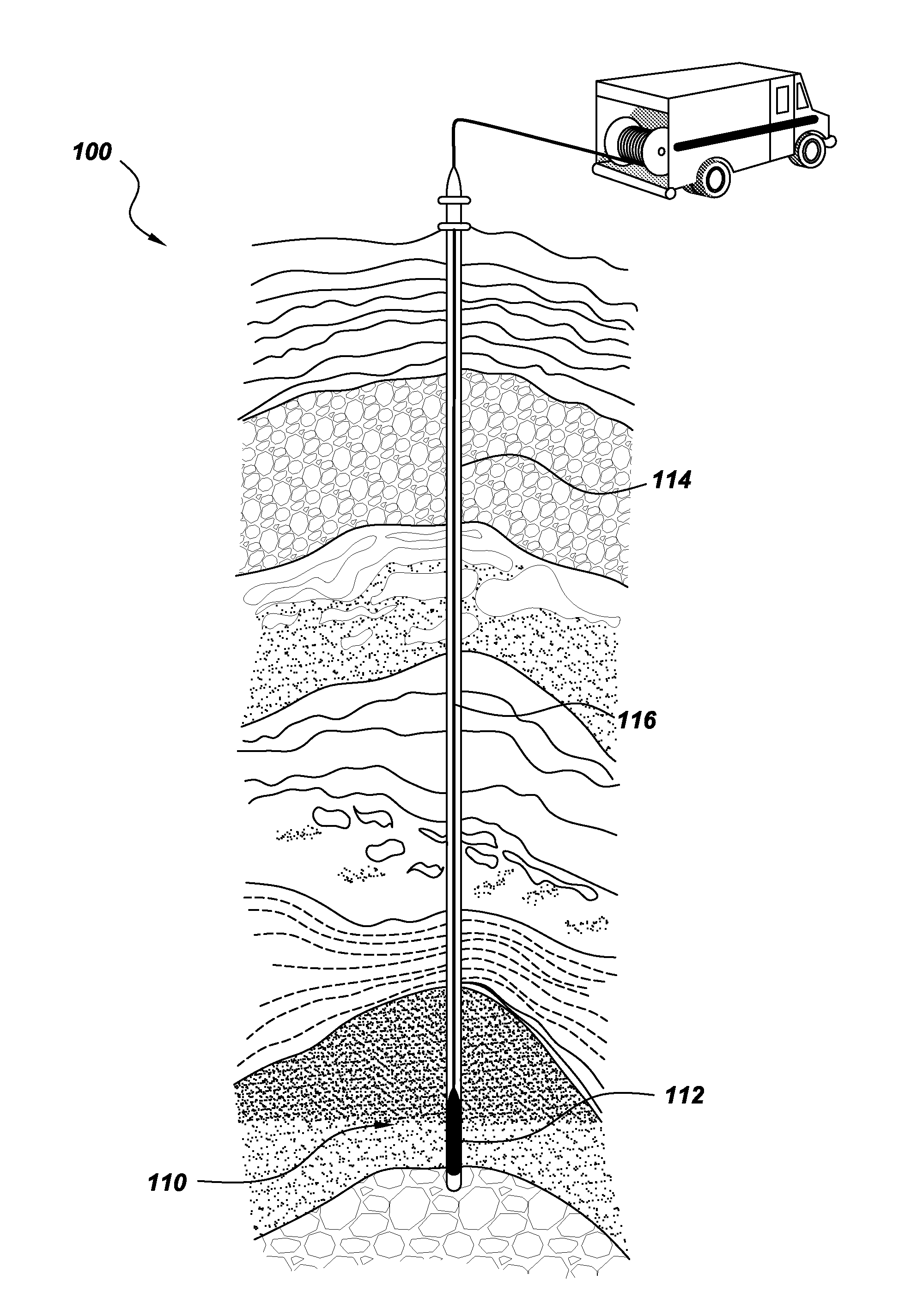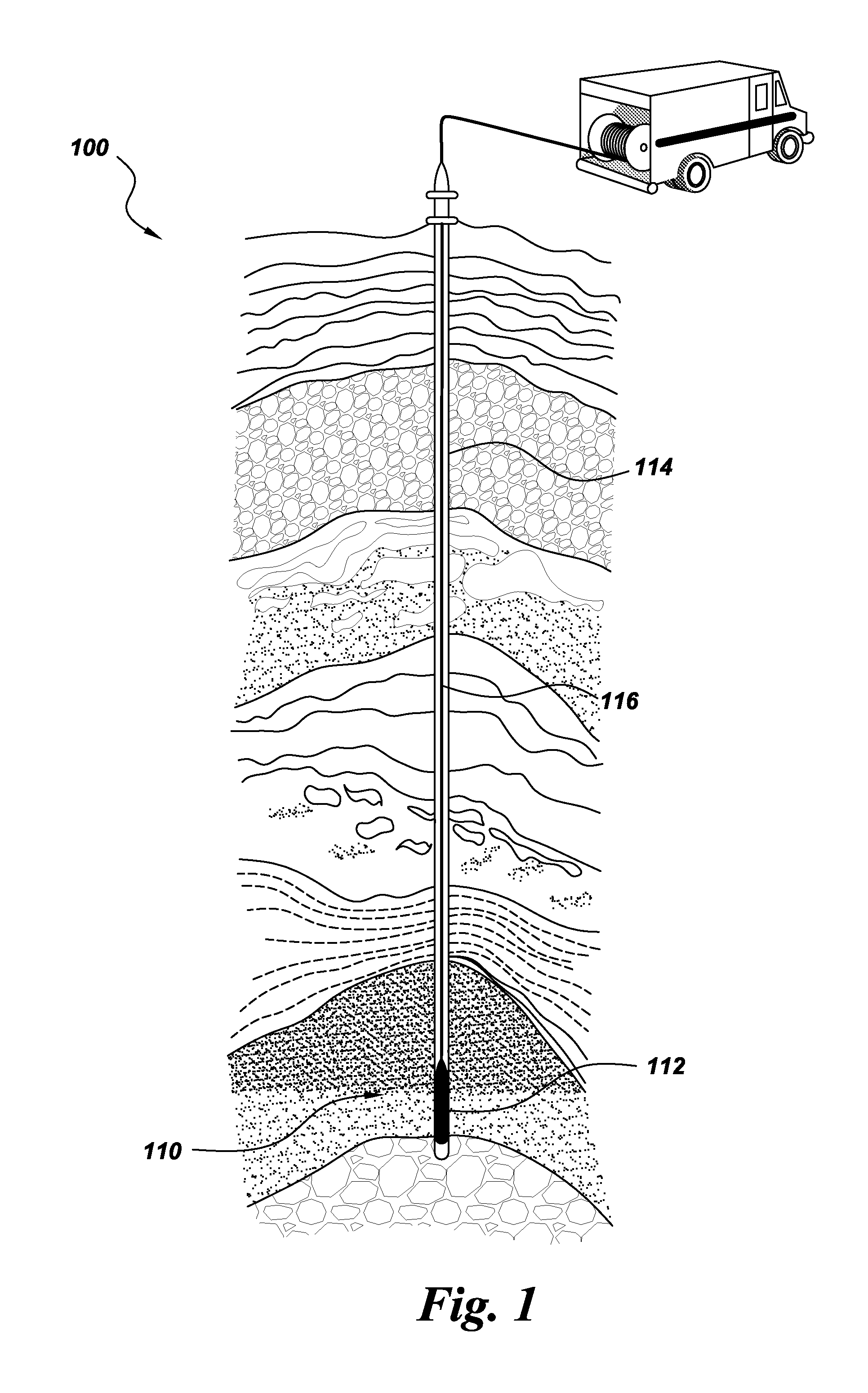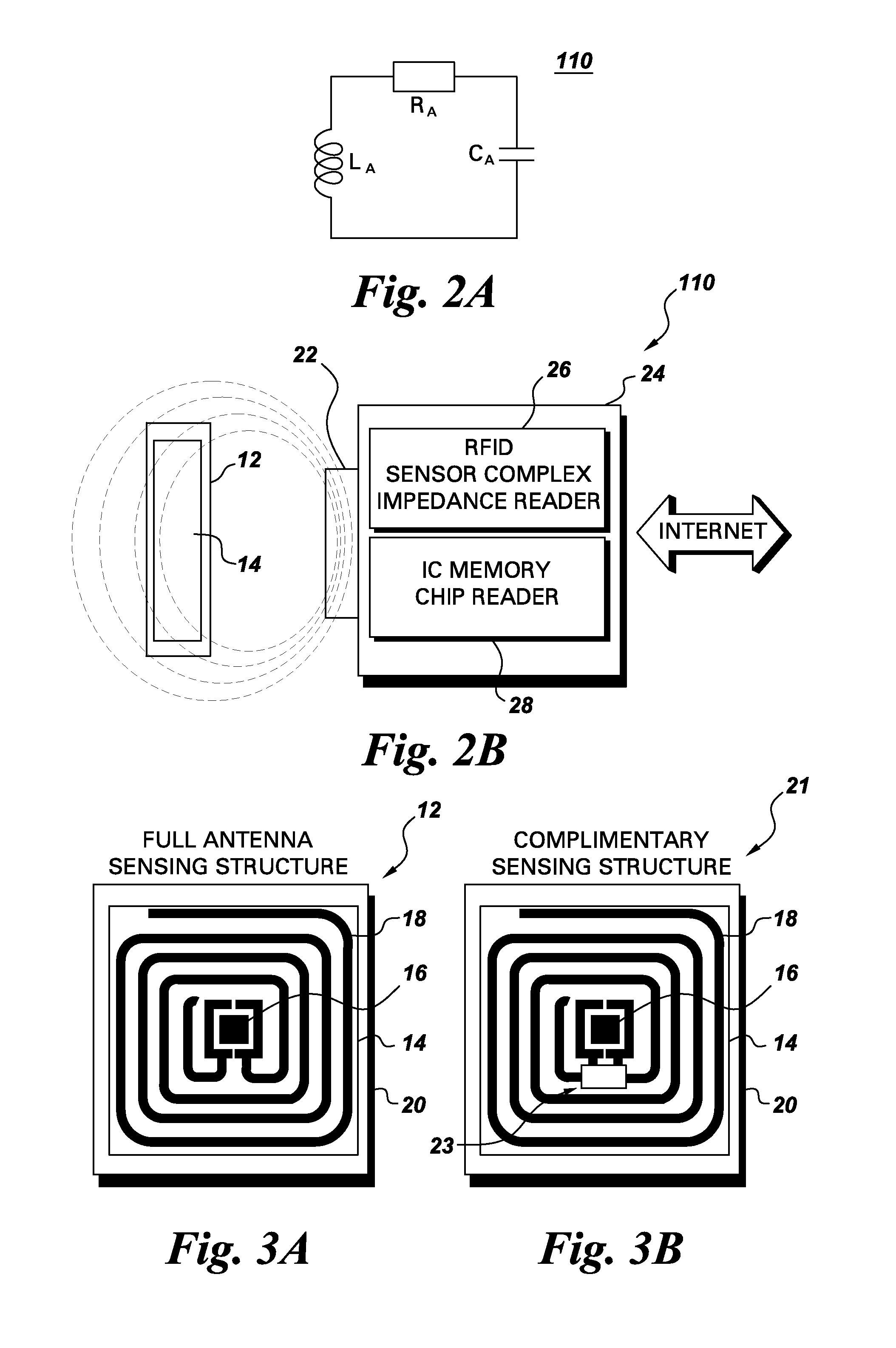System and method for monitoring down-hole fluids
a technology of fluid monitoring and downhole, applied in the field of system and method for monitoring downhole fluid, can solve the problems of inability to achieve the effect of practical sensors for detecting trace levels of analytes, prohibitively long acquisition time over the broad frequency range involved, and low sensitivity of known measurement configurations, etc., and achieve the effect of not being useful in downhole environments
- Summary
- Abstract
- Description
- Claims
- Application Information
AI Technical Summary
Benefits of technology
Problems solved by technology
Method used
Image
Examples
Embodiment Construction
[0025]Embodiments of the invention are directed to systems and methods for detection with high sensitivity, selectivity, accuracy, signal-to-noise, and data acquisition speed. Embodiments of the invention utilize the principle that individual chemicals and biological species will have different dielectric properties, that those properties will vary in response to temperature changes, and that those properties may be probed effectively in the context of a process fluid being removed from a fluid reservoir using a resonant sensor such as a resonant LCR sensor as the probe. According to embodiments of the invention, instead of using conventional impedance spectroscopy for scanning across a wide frequency range, from a fraction of a Hertz (Hz) to tens of gigahertz (GHz), a resonant inductor-capacitor-resistor (LCR) sensor may be used to rapidly acquire spectral data and with a high signal-to-noise ratio across a relatively narrow frequency range. Instead of measuring the broad impedance...
PUM
 Login to View More
Login to View More Abstract
Description
Claims
Application Information
 Login to View More
Login to View More - R&D
- Intellectual Property
- Life Sciences
- Materials
- Tech Scout
- Unparalleled Data Quality
- Higher Quality Content
- 60% Fewer Hallucinations
Browse by: Latest US Patents, China's latest patents, Technical Efficacy Thesaurus, Application Domain, Technology Topic, Popular Technical Reports.
© 2025 PatSnap. All rights reserved.Legal|Privacy policy|Modern Slavery Act Transparency Statement|Sitemap|About US| Contact US: help@patsnap.com



